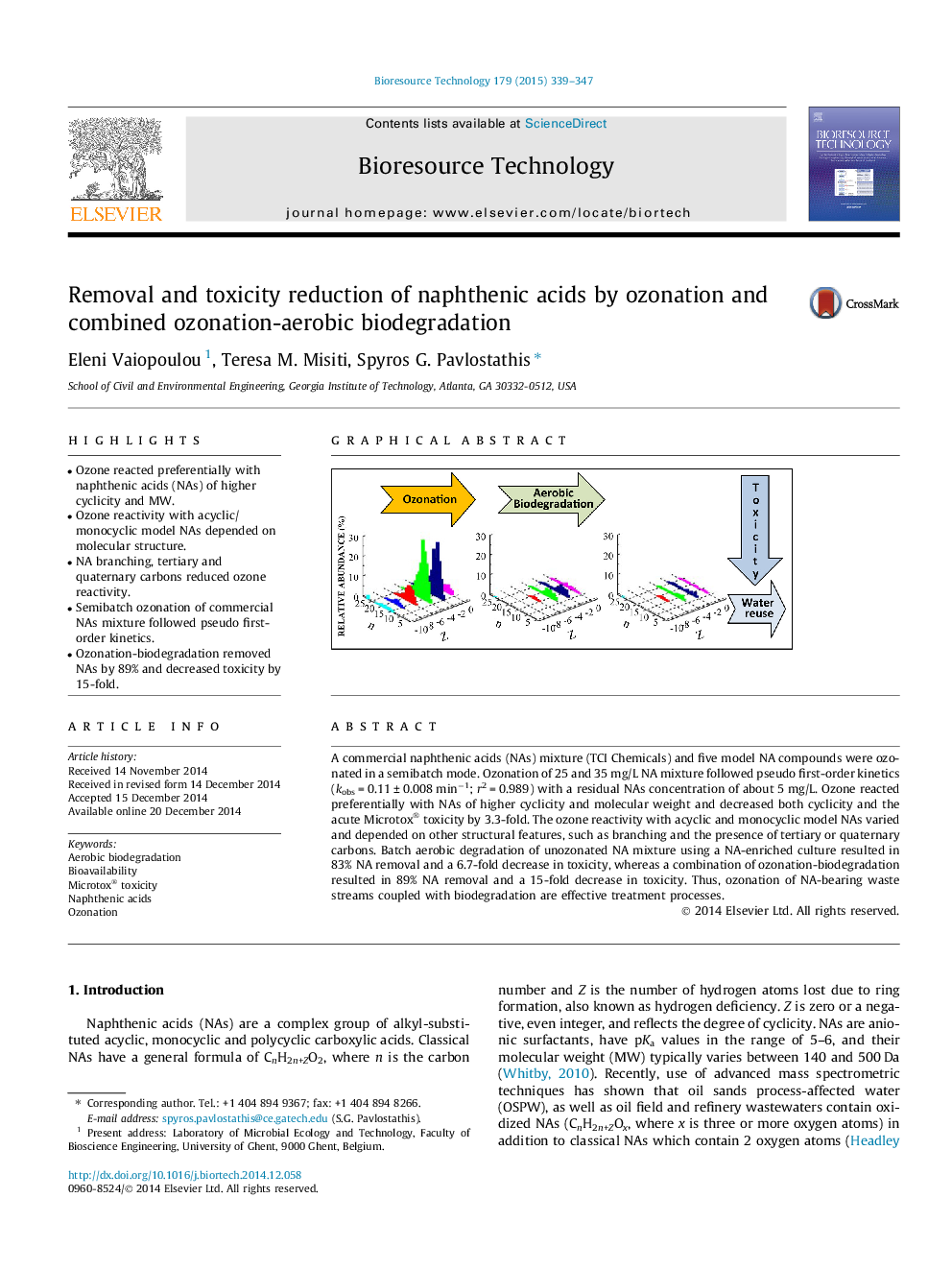| کد مقاله | کد نشریه | سال انتشار | مقاله انگلیسی | نسخه تمام متن |
|---|---|---|---|---|
| 680125 | 1459964 | 2015 | 9 صفحه PDF | دانلود رایگان |
• Ozone reacted preferentially with naphthenic acids (NAs) of higher cyclicity and MW.
• Ozone reactivity with acyclic/monocyclic model NAs depended on molecular structure.
• NA branching, tertiary and quaternary carbons reduced ozone reactivity.
• Semibatch ozonation of commercial NAs mixture followed pseudo first-order kinetics.
• Ozonation-biodegradation removed NAs by 89% and decreased toxicity by 15-fold.
A commercial naphthenic acids (NAs) mixture (TCI Chemicals) and five model NA compounds were ozonated in a semibatch mode. Ozonation of 25 and 35 mg/L NA mixture followed pseudo first-order kinetics (kobs = 0.11 ± 0.008 min−1; r2 = 0.989) with a residual NAs concentration of about 5 mg/L. Ozone reacted preferentially with NAs of higher cyclicity and molecular weight and decreased both cyclicity and the acute Microtox® toxicity by 3.3-fold. The ozone reactivity with acyclic and monocyclic model NAs varied and depended on other structural features, such as branching and the presence of tertiary or quaternary carbons. Batch aerobic degradation of unozonated NA mixture using a NA-enriched culture resulted in 83% NA removal and a 6.7-fold decrease in toxicity, whereas a combination of ozonation-biodegradation resulted in 89% NA removal and a 15-fold decrease in toxicity. Thus, ozonation of NA-bearing waste streams coupled with biodegradation are effective treatment processes.
Figure optionsDownload as PowerPoint slide
Journal: Bioresource Technology - Volume 179, March 2015, Pages 339–347
